|
Of the three main types of camping — hookups at a campground, boondocking off the grid, and moochdocking — the last has a lot of appeal, for a number of reasons. Let’s look at the benefits of moochdocking. What Is Moochdocking? Moochdocking is the term we use to refer to parking our rig on the property of family or friends. This can range anywhere from a driveway to a spacious farm. Although no two moochdocking setups are identical, they usually include some sort of electric hookup, a way to get water, and laundry facilities. Some arrangements have beefier electric hookups than others. With a normal 15-amp circuit, we can run the essentials in our fifth wheel: lights, outlets, refrigerator, electric water heater — and charge our laptops and phones. And if we switch the refrigerator from electric to propane and turn off the electric water heater, we can use our microwave. With a 30-amp circuit, we can also run one of our two air conditioner units. Depending on the time of year, we may not need that option. With a 50-amp circuit, we can easily power everything inside our rig all at the same time, including both air conditioners, the microwave, refrigerator, electric water heater, vacuum, and more. Dedicated Time with Friends and Family One of our favorite aspects of moochdocking is the time it affords us to catch up with family and friends. By staying at the homes of loved ones, we get to enjoy meals with them, fun activities, reminiscing, and lots of laughter. Thanks to our affiliation with the Commemorative Air Force and our experience with Continental Singers and Orchestra (where we met), we know lots of people across the country. With those friends and our spread-out family members, we have someone to visit in nearly every state. Moochdocking offers us more frequent opportunities to see those loved ones than we’d get living in sticks and bricks. Cost Savings As you might imagine, mooching electricity and water from others helps the bank account. And by spending time with our hosts, we tend to take fewer trips in Gulliver during a stay, which saves on diesel costs. That’s not to say we take advantage of loved ones in this type of setup. Quite the contrary. We realize the blessing it is to spend time with and benefit from family and friends’ generosity and are quick to compensate where possible. That compensation can come in the form of cooking meals (something Bob loves to do and is really good at), helping with home projects, reimbursing toward an electric bill, or taking our hosts out for a fancy meal — or a combination of things. Longer Stays As a result of the cost savings and additional resources moochdocking offers, we’re often at liberty to stay in one location longer. By using hosts’ bathroom and kitchen facilities, our black and gray wastewater tanks don’t fill up as quickly as they otherwise would. This in itself provides a number of benefits. We have more time to help with projects, more time to catch up with people we haven’t seen in a long time, and more time to investigate the area. That’s how we were able to do quite a bit of exploring in Virginia, for example. It’s also why we were able to get a true Cajun experience in Louisiana. Longer stays also give us opportunities to take care of needed maintenance and repairs on our rig. The key is not wearing out our welcome so that we can return for another visit.
Helping Others We’ve always enjoyed gaining and employing skills and experience by doing manual labor. With moochdocking and longer stays, we’re more readily available to pitch in on various projects, and we take joy in it. I once termed this “tradedocking” — working for a free place to stay. Not only does this help family and friends, but it also gives us memories together. We helped paint, renovate a bathroom, lay laminate flooring, upgrade computers and equipment, do construction projects, trim trees, and more. Sleeping in Our Own Bed One of the biggest benefits of moochdocking is being able to visit loved ones for a week or more and sleep in our own bed every night. As the saying goes, “There’s no place like home.” Likewise, there’s no place like our own bed for a good night’s rest. Moochdocking is a truly welcome experience. We’re thankful for our many friends and family scattered across the country, both those who have space for us and those who don’t. Being able to visit you all is a blessing we treasure. You might also like 4 Perks of Full-Time RV Living.
2 Comments
If you’ve ever wondered how full-time RVers stay healthy and fit while living on the road, this post is for you. Life on the road is not conducive to routine — at least not that we’ve found. Sure, we have routines to a certain extent. We follow checklists for packing the inside of the trailer for travel, connecting the truck to the trailer, and disconnecting the truck from the trailer. And I have a general work routine. What’s harder to set and stick with is a health and fitness routine. How Do RVers Exercise? Some RVers have a Planet Fitness Black Card, which gives them access to Planet Fitness gyms and showers across the country for about $25 a month. Many places we visit are not near a Planet Fitness, and we don’t want to plan our stops based on those locations. Other RVers carry exercise equipment, such as dumbbells and resistance bands, with them as part of their life on the road. Those who have toy haulers can even rely on an all-in-one gym because those rigs are designed to transport more weight than non-toy haulers. Jogging is another option, as is vigorous walking and/or hiking. We try to go for walks wherever we find ourselves. Some locations are more favorable for this than others. We’ve been in places near small, busy roads that limited how far we could venture. We’ve also been in places where we could walk as long as we wanted. We’ve had to be a little creative when it comes to exercise. When we’re stationary in the winter months, we can use the fitness center at the park we stay at for strength training. It gives us something to do together, and we can challenge each other. On the road, we have to make a point to exercise. For many months, I used a free phone app that ran through various exercise routines. I found it quite helpful, but after the end of each six-week or so routine, I had difficulty staying motivated to continue. After a bout of tendinitis, I got out of the habit of using the app. Virtual Reality When we owned sticks and bricks and were raising our kids, we had a Nintendo Wii for many years. We enjoyed how it encouraged us to be active while playing video games. I even used it for a regular fitness routine every morning and stayed in good shape. While visiting friends in Louisiana, we noticed a virtual reality headset sitting on a table and asked about it. Belinda let us try it out, and we were amazed at the immersive experience it provided, transporting us to a different world. Like the Wii, it involved being active to play many games. A quick Google search unveiled that we could purchase a Meta Quest 2 for about $200. (Purchasing from that link will give you and us a credit.) I had expected it to cost much more. Convinced the unit would provide the avenue we wanted for staying healthy and fit — for a small footprint and without adding much weight to our rig — we invested in one for ourselves, along with a game called Beat Saber.
Exercising now is fun. I get a good aerobic workout while slicing through boxes with a lightsaber according to direction arrows and the beat of music. It’s a challenge to hit all the boxes in Beat Saber, and it’s a great stress release after a hectic workday. As with anything, you get out of the experience what you put into it. I take my workouts seriously and am hooked. I guess we’ll be staying in better shape now. You might also like Is RV Life as Glamorous as It Looks? Farms and crawfish ponds stretch for miles, cultivating a non-rushed pace of life. The appetizing smell of smoked meat wafts through the air. Cypress trees tower over homes and roads, providing a shady respite from intense sunshine and humidity. Birds whistle melodious songs. Turtles ditch the warmth of their log perches with a kerplunk into the water as footsteps near. These are some of the sights, sounds, and smells of the South we grew to appreciate and delight in after two weeks of immersion in Cajun country while visiting our friends Dwaine and Belinda in Ville Platte, Louisiana. Ville Platte is a unique place known as the “Smoked Meat Capital of the World.” It’s also famous for its swamp pop music and even features a museum dedicated to this rare genre, which combines country and western, rhythm and blues, and French Louisiana influences. Perhaps most noteworthy, though, is the town’s special holiday celebrated on the first Friday of October. The whole town shuts down to commemorate Squirrel Day and the start of hunting season. Most men head to the woods to spend the weekend hunting, leaving most of the women behind to enjoy shopping and girl time. Food Focus As indicated by the importance of Squirrel Day, food is a focal point in this region. It typically centers on rice and gravy, which isn’t as plain as it sounds. It involves hours of browning meat, scraping up the stuck-on bits, adding water to deglaze the pan, reducing, and then repeating the process over and over. Not only does it create a delicious gravy, but it also tenderizes any meat. The meat, often smoked, is usually tasso (smoked pork), sausage, shrimp, chicken, or steak — or a combination. No Cajun dish is complete without seasoning, which varies per cook but always includes cayenne pepper. Belinda uses about 80% cayenne pepper along with garlic powder, onion powder, smoked paprika, and white pepper. The people in Louisiana love their red pepper. You’ll even find it on pickles. We grew a taste for its flavor and steady heat. We also sampled cracklins and literal pigtails, which were kind of like chicken wings. Another staple in Cajun cooking, besides gumbo, is boudin (pronounced boo-dan — but with a soft “n”). It looks a bit like sausage but is not sausage at all. Somewhat akin to pasties in the North, it typically comprises pork, rice, and seasonings in sausage casings. This steamed all-in-one meal is enjoyed for breakfast, lunch, supper, or a snack. Crawfish Boil Crawfish boils, common in the region when the critters are in season, provide a great reason to get together. While the live creatures undergo a running water bath by hose, corn cobs and potatoes — and sometimes other vegetables and hot dogs — are thrown into the boiling pot as an appetizer. After the veggies are cooked and shared, crawfish are transitioned to the boiling pot, and seasoning — including the all-important cayenne pepper — is added. When the crustaceans are cooked, they’re moved to a large insulated cooler to keep them warm. Eating the feast is an experience in itself. It involves gathering around a partitioned table with a big hole in the middle to provide easy access to a trash barrel for collecting discarded shells. A huge scoop holding about five pounds is used to transport crawfish from the cooler to one of the table partitions, and a messy adventure ensues. Some people wear gloves while breaking apart and eating crawfish, and for good reason. The spices and wetness from the boil can turn fingers orange while trying to get the tail meat out, and the sharp shells can cut into skin. We opted not to use gloves and dove right in, reveling in the deliciousness despite the mess and effects on our hands. Southern Hospitality
The South has a wonderful reputation for its generous hospitality, which adds to the welcoming, laid-back atmosphere of the region. Unlike in the big city we spent 24 years in, the people in Central Louisiana don’t tend to be in a hurry. They take time to stop their grocery shopping and errand-running to catch up with a familiar — or not so familiar, in our case — face. People enjoy getting together, visiting, and celebrating life. Despite their funny talking (omitting “are,” as in, “You welcome,” for example), they’re authentic and openhearted. We were blessed to participate in three get-togethers while in town. Each gathering centered on a delicious meal and plentiful opportunities to hear from others, share about our experiences, and learn from one another. Although the people had just met us, they genuinely cared about us and welcomed us back with open arms the next time we happen to pass through. Our lives are richer for having spent two weeks in Cajun country. You might also like Farm Living in Michigan. As with any home, RVs require maintenance — even if they’re not driveable. We live in a fifth wheel: Tagalong. Although it has no motor, things still break or need attention from time to time. When you travel regularly, proper RV maintenance becomes a priority. Otherwise, the issues that arise could quickly exacerbate as a result of the mini earthquakes experienced during transit. Nearing the end of a long-term RV stay, we knew we needed to take care of some problems. Every year, it seems, we have to deal with broken window shades. Sometimes they get stuck open. Other times, they stop rolling up or down. We’ve learned how to replace the springs that control the movement, but removing the shades from — and, even worse, reinstalling them on — the walls is no easy feat. Still, the job had to be done. Here are some other maintenance tasks we’ve had to tend to. Shine Restoration We bought our fifth wheel in Mesa, Arizona, in June 2019. With no place to store it, the dealership agreed to keep the rig on its lot for six months. That worked well for us, but the Arizona sun and heat took their toll. Fast-forward just a few years, and we found ourselves wanting to address the dullness of Tagalong’s exterior to extend the life of our rig before it was too late. So, we booked a wash-and-wax job. Three workers showed up at our home and walked around the rig, assessing the job ahead of them. After their evaluation, the foreman explained that the clear coat protection on the rig had eroded. A wash-and-wax job alone would not restore it, he said. Tagalong needed something more intense: oxidation remover. Since we don’t have to paint the exterior of our RV home every few years like we did our sticks and bricks, this seemed like a necessary equivalent. We decided to invest in the added protectant to restore Tagalong’s luster — for nearly double the price we had planned to pay. Four hours later, the men finished the job, eager for us to see the results of their labor. The dullness we had grown accustomed to had been erased, replaced by a shine that made our rig look almost like new. Upholstery Fix Like other RVs built in 2018, our rig came equipped with artificial leather living room furniture. This quickly became an industry problem as the furniture material kept its integrity for only a few years before starting to peel. Because of that, modern RVs come with fabric furniture. When our recliner loveseat began peeling, we bandaged it with brush-on leather repair. That held for about a year before it, too, started to deteriorate. Not wanting to spend hundreds of dollars to replace our loveseat, Bob did some research and discovered self-adhesive leather repair kits in a variety of colors and sizes, available on Amazon. We took some measurements and ordered a roll to cover the material on both headrests, the location of most of the flaking. Working together, we cleaned the furniture, measured and cut the replacement material, and carefully and slowly attached it to the loveseat. Although it’s not a perfect color match, the fix covered beautifully. Thrilled with that success, we ordered a larger roll to blanket the loveseat seats, one of which had started to peel. Requiring larger pieces, that repair job proved a little more challenging. But we pulled it off and salvaged our furniture. Step Renovation The two stairs inside our rig that lead from the main living area to the bathroom and bedroom came covered in a protective plastic. Situated right inside the entry to the rig, the stairs are regularly exposed to sunlight, never mind the day-in, day-out use they’re subjected to. In many areas, the plastic had become brittle and broken. Wanting to prevent a tripping hazard, I decided to rip up all of the plastic protectant down to the particle board. I vacuumed the stairs to remove any dust and debris. Then I taped the edges and painted the stairs with a durable black floor paint with granules in it to prevent slipping. The two-coat restoration lasted for a year. After that time, some of the paint along the edge of each step wore down to wood. A little touch-up paint did the trick to correct the issue and keep the stairs protected and looking nice. Seam Recaulking We’ve had our share of water issues since moving into our RV. Not wanting to face anymore, we keep a close eye on external areas that could be at risk for allowing rain in. When installing new solar panels, we noticed the caulking along one side of the roof had pulled away, likely a result of the sun beating on it. Bob ordered some silicone caulk to fix the issue, but before he could apply it, he had to remove the old silicone. He spent a couple of hours teetering on the edge of the rig, painstakingly peeling the old sealant and rubbing the seam clean. After another hour on his hands and knees to recaulk the seam, he emerged victorious — and sore from all the kneeling. Despite that, we shouldn’t have to worry about rain seeping in.
You might also like A New Type of Camping. Spring cleaning takes on new meaning when you live full time in an RV—especially if you stay in one place for the winter months. It’s easy for items to accumulate and take up precious space in your rig. Without closing and opening RV slideouts, it can seem like there’s more than enough room for both your existing and new belongings. When travel looms, however, RV owners are forced to find homes for things that could be in jeopardy if left out during relocation. This can be a stressful endeavor with space at a premium. Although Bob and I have been full-time RVers for four years, staying stationary for about five months during the winter, we still haven’t mastered the “one-in, one-out” methodology to introducing new items to our fifth wheel. As a result, we end up dedicating one day a year to minimizing our accumulations before hitting the road. Eradicating Extras Admittedly, the purging process has gotten easier. We’ve definitely learned to acquire less than we accumulated after two years of travel. To be fair, though, some of those items were leftovers from our sticks and bricks. We take a structured approach to the eradication process, going through all of our clothing, drawers, and cabinets. But because we start out with less than we originally did, we have a better idea of the extras we’ve gained. That makes paring down easier. Our biggest challenge tends to be finding permanent locations for larger items we obtain, such as a pasta maker, food sealer, and toaster. Protecting a Pasta Maker Removing the pasta maker from its box proved to be a good decision, significantly minimizing its footprint. But we had to be strategic in the placement of the appliance to ensure its safekeeping during transit. I found the optimal spot behind our recliner loveseat. After verifying that the gadget would be out of harm’s way with the recliners both open and closed, I had to determine what to do with the pasta maker’s accessories. Lacking weight, they could get jostled and lost if we stowed them with the machine. I put them in a gallon-size zippered plastic bag and looked around the rig for the ideal location. Bob suggested a kitchen drawer where nothing could slide into them. The solution worked perfectly.
Finding a Home for a Food Sealer Moving on to the food sealer, I came up with a plan to stash it in an out-of-the-way interior corner near our dining table. The device fit there beautifully. But I still had to stow four rolls of plastic wrap for the machine. Examining the interior of our upper rear cabinets, where we had previously found evidence of a mouse invasion, I discovered some empty space in the plastic, lidded bins we had purchased to protect our dry goods from another rodent attack. Moving some things around and removing items we knew we wouldn’t use provided just enough room for all four rolls. Problem solved. Tucking Away a Toaster When we started our RV life, we gave up our toaster, thinking it a fire hazard in an RV. Plus, it consumes a significant amount of electricity when we’re running on batteries. After three years of making “toast” in an iron skillet when we wanted the indulgence, we invested in a used toaster from a thrift store. It weighed little, cost little, and fit well in a deep kitchen drawer. The only problem? It took the in-transit space of our coffee French press and a saucepan we use for boiling water. We had planned to leave the toaster behind before we hit the road, but we had grown to enjoy the occasional delicacy it provided. With travel approaching, we had to find a more permanent solution for housing the appliance. As a general rule, we strategically pack our cabinets and drawers to minimize items shifting during transit. Because of that, we had limited options for our treasured device as most drawers and cabinets lacked space for something its size. But then I had an idea. The shelf in the cabinet under our bathroom sink could work. Sure enough, the toaster fit in that spot. The travel toaster solution may be a bit unconventional, but it allows us to keep the toaster. Once we arrive at a location, we remove our water-boiling saucepan and French press from its kitchen drawer, and the toaster takes up residence there for easy kitchen access. There’s something liberating about having few possessions to weigh us down. Because of that, we’ll continue to set aside time for spring cleaning. It’s well worth it for the freedom it gives us to go where we want, when we want, and spend time with the people we want. You might also like What an RV Travel Day Is Like. As full-time RVers, we often get asked, “What do you want to do while you’re here?” by friends and family. Because of our RV lifestyle, many think we’re always on vacation. As intriguing and attractive as that sounds, the reality is that I work full time. That means that, although Bob isn’t employed, work responsibilities have to come first.
Back in the day, when we owned sticks and bricks and a travel trailer, we made a point to get away every summer for a family vacation, often with our trailer in tow. We enjoyed cooking and eating meals outdoors, sitting around campfires, roasting marshmallows, playing games, and exploring nature. Since we sold our sticks and bricks and moved into our fifth wheel, vacation looks a bit different. We get away to somewhere new every week or two as part of everyday RV living. We sightsee and get out in nature regularly. No longer do we plan weeklong adventures in our rig. Every day is an adventure. I used to feel guilty for sitting in our rig watching TV while other campers gathered around fires to enjoy the great outdoors, but I’m over it. Our RV life may look the same on the surface as that of weekend warriors or RV vacationers, but it’s actually quite different. Clearing Up Vacation Misconceptions An RV vacation can be a wonderful experience: a nice camping setup, maybe with family or friends, outdoor activities, and plenty of recreation. It can include stories around the campfire every night, stargazing, and sleeping in. Because we live full time in our rig, we don’t often have campfires, just as most people in sticks and bricks don’t have campfires most nights. Visiting friends and family across the country may be part of vacation for many people, but for us, it’s typically not. Sleeping in is a weekend luxury not afforded on workdays during the week — at least not for me. Our daily RV life includes sightseeing and adventures to capture the essence of the area in which we find ourselves. We try to fit in as much as we can, but we have to do that strategically around my work schedule. What Vacation Looks Like for Full-Time RVers At this point, you may be wondering “What do full-time RVers do for vacation?” More often than not, vacation for us means escaping our rig and not sleeping in our own bed. It involves taking time off work for me but may include light volunteer work for Bob. It means more eating out and less cooking in, flying not driving, fewer responsibilities and more relaxation, and investing more time and money into sightseeing and adventures than we normally would. Although our vacations often leave Tagalong behind, they may include Gulliver, like on our anniversary trip to Mexico or our visit to the Arctic Ocean. Driving the Alaska Highway was a vacation for us in that I took time off work, but it included Tagalong and sleeping in our bed every night. Our favorite kind of vacation is cruising. It gets us completely away from our rig and out on the open seas to explore areas we can’t take our rig. I relish the disconnection from my normal busy life and appreciate home more when we return. Although as full-time RVers we don’t use our rig for vacations, we continue to enjoy our RV lifestyle and the many perks that come with it. You might also like Where We Park Our Rig for Flight/Cruise Travel. Despite the logistics involved in full-time RV living, the lifestyle offers numerous perks. We have the best of two worlds: months of living on the road and months in a single location. After four years of this lifestyle, we have a pretty good grasp of the perks of full-time RV living — at least for us. Others might disagree or see other things as perks, but here are our top four:
1. Freedom Because we sold our sticks-and-bricks home and live only in our 42-foot fifth wheel RV we named Tagalong, we have a lot of freedom. If we don't like our surroundings or views in one area, we can pack up and move to another without too much trouble. If we like where we find ourselves, as we did in Homer, Alaska, we can cancel our plans and choose to stay longer. The world is our oyster. 2. Seeing Family and Friends One of the greatest joys of our RV lifestyle is the ability to see family and friends across the country much more often than we'd see them otherwise. Because of our involvement with the Commemorative Air Force, our history with the Continental Singers and Orchestra, our cruise experiences, and our hailing from different geographic areas (Massachusetts for Bob and Arizona for me), we know people from the West Coast to the East Coast, and even into Canada. This can make for some great moochdocking opportunities for us, depending on our loved ones’ living situations. (Thank you, friends and family!) We truly value the times we get to spend with loved ones near and far and are thankful for the many opportunities our full-time RV lifestyle affords us to do so. 3. Amazing Scenery From magnificent rock formations to welcoming waters and everything in between, full-time RV living puts us up close and personal to beautiful scenery. For example, we camped on the top of a bluff in Wyoming, overlooking the town of Rock Springs below. We backed up our rig to Port Valdez, a fjord of Prince William Sound in Valdez, Alaska, parked with fantastic views of Lake Michigan in the Upper Peninsula of the state, camped amid red maple leaves in Idaho in the fall, stayed on spacious farms in Florida and Michigan, and saw the northern lights on our return trip from Alaska. We also glimpsed lots of beautiful sunrises and sunsets across the country. 4. Always a New Adventure And that brings us to our fourth perk of full-time RV living: It's never boring. There's always a new adventure awaiting, whether that entails investigative troubleshooting to find the cause of a leak or tracking dinosaurs in the desert of Moab, Utah. We have very few, if any, dull moments. Full-time RV living is not for everyone, but it is for us. We plan to keep enjoying it and all that it has to offer until we get sick of it or we’re physically unable to continue, whichever comes first. You might also like Is RV Life as Glamorous as It Looks? I gingerly stepped over boxes for the umpteenth time to turn on the lights adorning our little Christmas tree, the clutter starting to get to me.
With our family gift exchange right around the corner, stacks of packages had made their way into our fifth wheel, taking up precious room in our 400 square feet of living area. Empty boxes the gifts had arrived in took up valuable floor and loft space while providing possible solutions to potential wrapping quandaries. The additional accumulation provided fewer options for normal everyday items such as mail, groceries we didn’t have time to put away, and wallets and phones to hang out. This only added to our cluttered situation and robbed my peace. Isn’t Christmas supposed to be a time of peace? And joy? Had I really let things steal my joy and the true meaning of Christmas? Surge Gives Way to Simplicity My thoughts wandered to the crowded city of Bethlehem in Judea. Our fifth wheel had filled with accumulated packages in anticipation of Christmas gift giving, much like the City of David had filled with people who needed to register for the census. That’s what compelled Mary and Joseph to travel 70 miles there from Galilee toward the end of her pregnancy. The hustle and bustle of that crowded city prevented the couple from finding a normal, hospitable place for her to give birth. No vacancy forced Mary and Joseph to seek shelter in a most unusual location: a dirty, smelly stable of live animals. Yet, those extraordinary circumstances led to the simple, humble birth of a king, who was wrapped in cloth and placed in a manger, or a feeding trough. God smiled down on his son in the form of a bright star that led shepherds to the stable to see this mysterious child, having been told about him by an angel. A Matter of Focus Back in the present with renewed joy, I made a point to focus on the true meaning of Christmas, despite the clutter in front of me. I knew that temporary state of chaos served a purpose to bring joy to others. It wasn’t meant to steal mine. Before I knew it, our living quarters would be back to our acceptable and preferred norm, with minimized distractions and greater simplicity, making it easier to focus on the things that truly matter. That’s what the stable birth provided for Mary, Joseph, and the shepherds. I’m grateful for this reminder about the importance of simplicity. I’m especially thankful for the humble, unceremonious birth we celebrate at Christmas time. Jesus came to Earth as a baby to make himself relatable to humankind. May this mystery cause you to reflect on your life as you come to grips with the simple message of Immanuel, God with us. You might also like Wrapped with a Bow. From the vantage point of a couch in front of a TV, full-time RV living can look pretty alluring: driving open roads, camping next to rivers and lakes, going where you want when you want, living a life of luxury. Much goes on behind the scenes to make all that happen, though. Because we relocate our fifth wheel every week or two, we always have plans in motion and on our minds. We don’t like to book RV stops far in advance so that we have freedom to change our route or destination on a whim. But we do like to have an idea of the direction we’re heading. For that reason, we’re continually working on future stays — not an easy feat for two middle children who aren’t great at making decisions. This involves a number of factors. Researching Destination Areas Adequate preparation requires a lot of research. We use our Campendium app to find big-rig-friendly boondocking options, campgrounds, and fees. If we don’t find something we like in a certain location, we increase the search radius to an hour or so outside of that destination area. We also check our Harvest Hosts app to identify if any big-rig-friendly hosts are in that vicinity. We pay an annual fee to be part of Boondockers Welcome, which was acquired by Harvest Hosts. This offers us free stays of up to five nights, depending on the host’s preference. Some hosts offer electric hookups, for a fee. This can come in handy when the weather’s warm and we want to run our air conditioners. Additionally, we use Google Maps to look at the satellite view of any place we’re considering for a better picture of the feasibility of getting our rig into and out of it. And Google Earth allows us to measure distance to determine if our rig will truly fit. Planning Routes Once we’ve identified a place we’d like to stay, we have to figure out the best way to get there. Google Maps may seem like the natural go-to, but it doesn’t take into account the height or length of our rig. Although the app’s suggested routes tend to be OK for us in the West, we can’t rely on them in the East, where low clearance and weight restrictions can be issues. We use our CoPilot navigation app to steer us in the right direction. Originally a trucker app, CoPilot allows us to enter the dimensions of our rig and then navigates us accordingly, avoiding U-turns and roads with weight and height restrictions. Identifying Fuel Stops Finding our weekly destinations and routes is only part of the necessary research of RV life. We also have to locate places along the way where we can get fuel. Since upgrading the capacity of our fuel tank, we can go farther before needing to stop, which gives us more options to find the best diesel price using our Open Roads app. Open Roads is a fleet fuel program that gets us discounts at TA, Petro, and Love’s truck stops across the country. After checking Gulliver’s fuel level to determine how far we can go before we need more diesel, we look at Google Maps to identify cities with truck stops. Equipped with that information, we go back to our Open Roads app and enter the city name to populate fuel stations there, along with their prices. The app shows us the cost of fuel with our discount applied, not the publicly displayed price. Finding Dump Stations If we’re doing any sort of boondocking or moochdocking, we also need to identify RV dump stations nearby where we can empty our waste water tanks. Campendium can help with that, as can a website called rvdumpsites.net. Finding dump stations is only half the battle. More importantly, we have to determine if our rig can get into and out of the facility. We’ve encountered plenty that weren’t compatible with the size of our 42-foot-long rig — even in established campgrounds.
To figure out if we’ll be able to get Tagalong in and out of a dump station, we once again consult the Google Maps satellite view and street view, if available, for accessibility and clearance issues. Checking the Weather Another big part of RV logistics is keeping tabs on the weather, as we don’t like to drive in rain or other inclement conditions. Working our way north for our Alaska adventure, for example, we had to wait for the weather to warm up before we could move on. This left us in the desert outside of Las Vegas for two weeks, and we still got snowed on in Twin Falls, Idaho. As you can imagine, all of this research takes considerable time. It’s a not-so-pleasant aspect of full-time RV living, which is not for the faint of heart. Yet, it’s a necessary part. Thankfully, Bob is an excellent researcher and does most of this planning for us. You might also like Confessions of a Full-Time RVer. RV lifestyles come in two major forms: seasonal full-time RV living and life on the road. The first can include a stationary setup in one location for fall and winter or winter and spring and a stationary setup in another location for the other two seasons. We’ve found that by combining the two types of RV lifestyles, with seven months on the road and five months in a single location, we get the best of both worlds. Nomad on the Move Most of the year, we travel the country to see destinations and visit loved ones along the way. As Bob likes to say, “Throw a dart at a map of the U.S., and we might be there.” He’s right, as our itinerary changes every year — sometimes on a monthly or daily basis. That’s one of the things we relish about RV life: the flexibility. If friends and family at an upcoming stop have to leave town suddenly, we can quickly change plans and reroute our course. If our planned travel day looks iffy because of rain and storms, we can pivot and stay put for a few more days or even a week. In this nomadic lifestyle, we typically move to a new location every week or two. In doing so, it becomes second nature for us to pack and close the trailer, hook it up to Gulliver, spend hours on the road, park, and set up camp. Lather, rinse, repeat. While in a location, we try to make a point to investigate our surroundings and get a feel for the area. That’s part of the adventure. Each stop holds a sense of intrigue and mystery. We immerse ourselves in the locality and try to find off-the-beaten-path things to do — as well as some popular things to do, such as visiting national and state parks. Seasonal Resident When we’re not moving every week, we live a completely different life. Bob equates it to taking off one jacket and putting on another, much like Mr. Rogers did. With months in one location and a reprieve from regularly packing and setting up the trailer, we enjoy more leisure and get comfortable in our home. We feel freer to leave things out, such as my puzzle table and in-process projects, and we notice bare spots that could use decoration. This can lead to accumulation creep, something we have to guard against. While stationary, we tend to live the way we would if we had a sticks-and-bricks home. Bob goes to the Commemorative Air Force three days a week to put his aircraft mechanic degree to work on WWII bombers, and I get into my daily work routine. We habitually frequent the grocery store, and our calendar fills up with activities and get-togethers. Being static also gives us ample time to address maintenance, issues, and needed upgrades on our truck and trailer. The Human Perspective Because we have traveling to look forward to when we’re stationary and an end of travel in sight when we grow weary of being on the road, we really do have the best of both worlds. It keeps life exciting and fun — as does meeting amazing people, which happens in both RV lifestyles. I think of the trucker we crossed paths with in Michigan, who graciously gave us diesel exhaust fluid (DEF) at a rest area when we were about to run out. Without that in our truck, it would have slowed to a painful 5 mph.
The trucker wouldn’t take money in exchange for the DEF, so I suggested we pay it forward. A few minutes later, another trucker pulled into the rest area with a flat tire and no way to fix it to move on. We offered the use of our 80-pound air compressor, happy to help. While we were assisting this second trucker, another RVer pulled up and asked if we needed help. We also met a young couple early in their RV life and were able to share some tips and advice. At a boondocking spot, fellow RVers gave us guidance based on their RVing experience. And another RVer lent us a water hose to add to ours so we could fill our water tank without moving our trailer. Stationary RVers are just as friendly and welcoming. We regularly exchange greetings and conversations with our seasonal neighbors. And they’re always quick to give us a hand if we need it, just as we’re eager to help them if we can. The RV community is one of people helping people. We’re thankful to be part of it. You might also like Confessions of a Full-Time RVer. |
AuthorThis is the travel blog of full-time RVers Bob and Lana Gates and our truck, Gulliver, and fifth wheel, Tagalong. Categories
All
Archives
July 2024
|






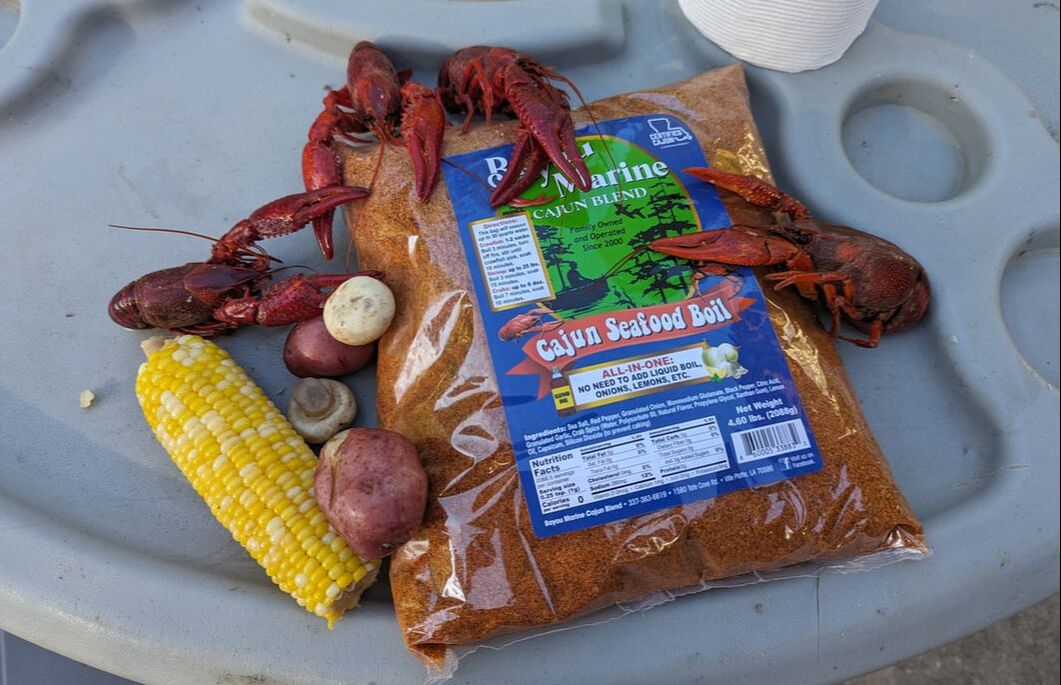
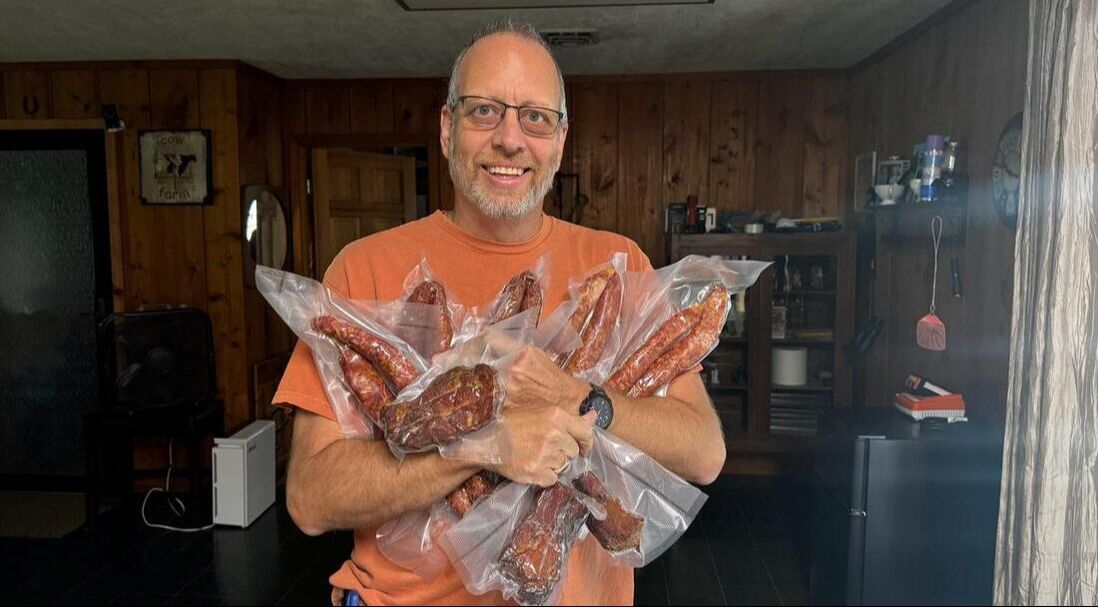


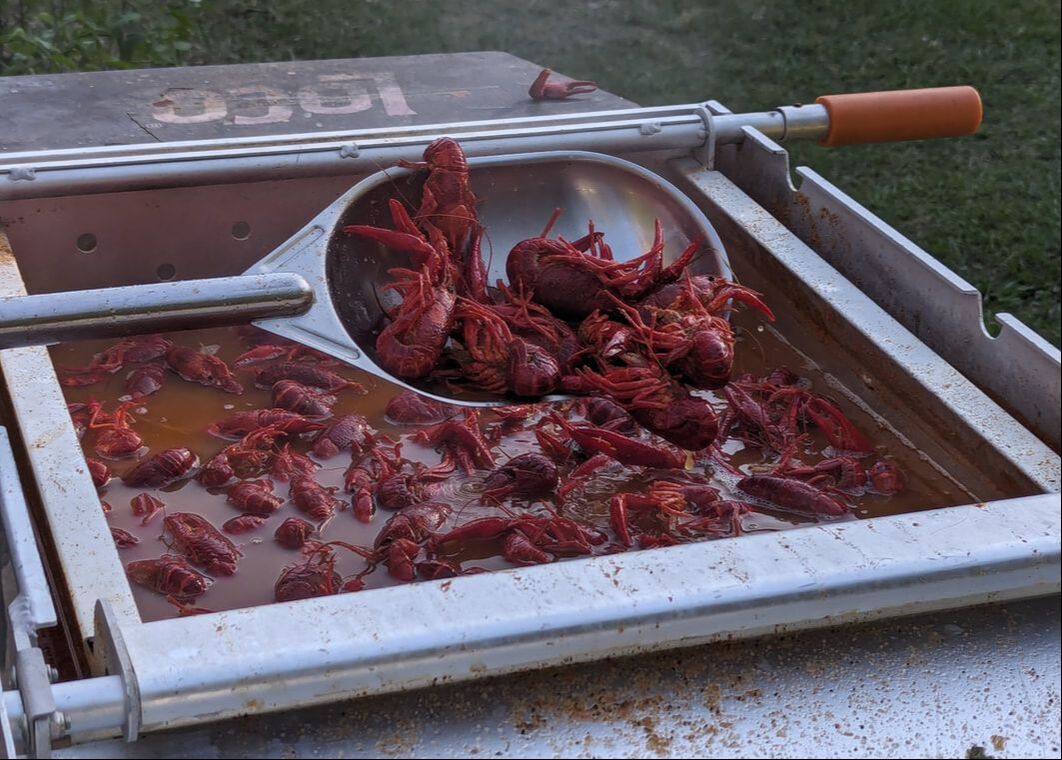
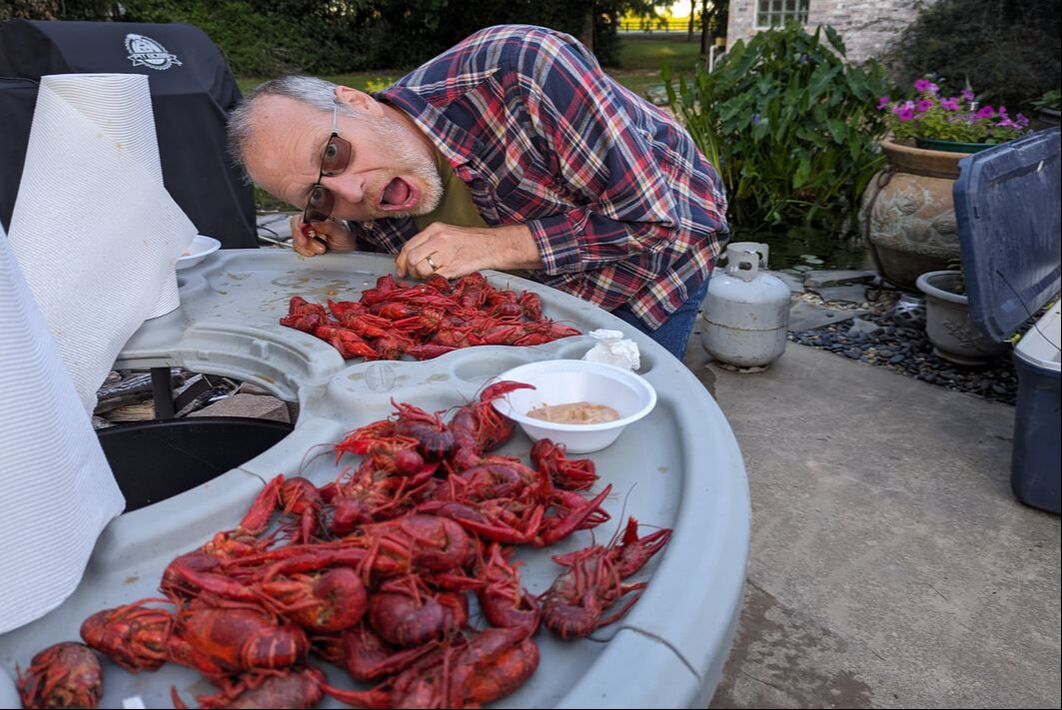
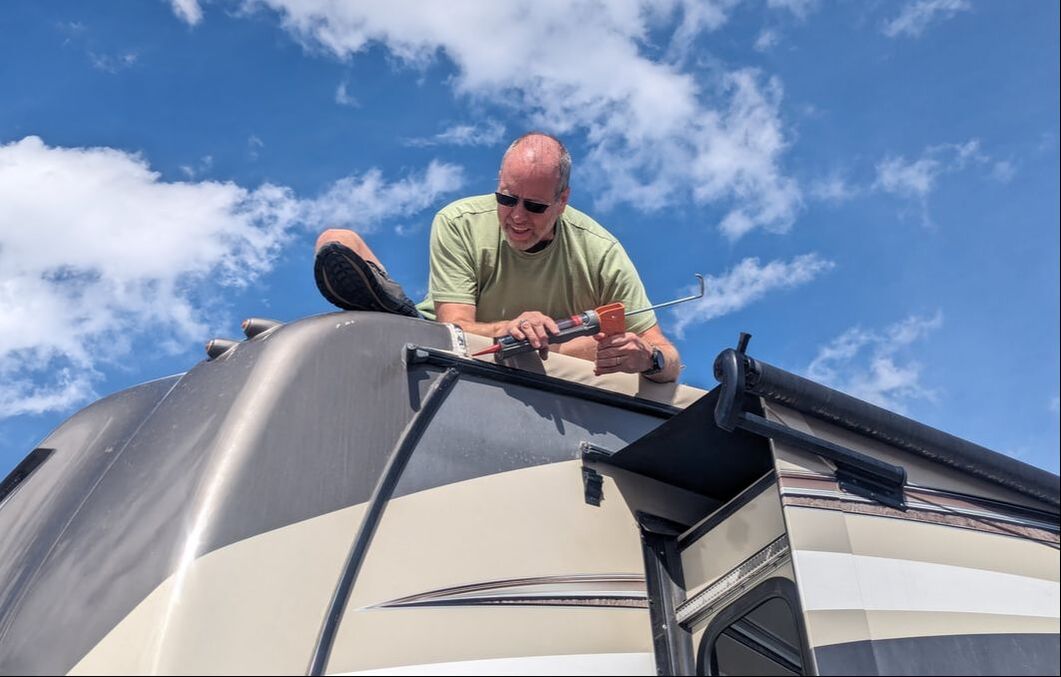
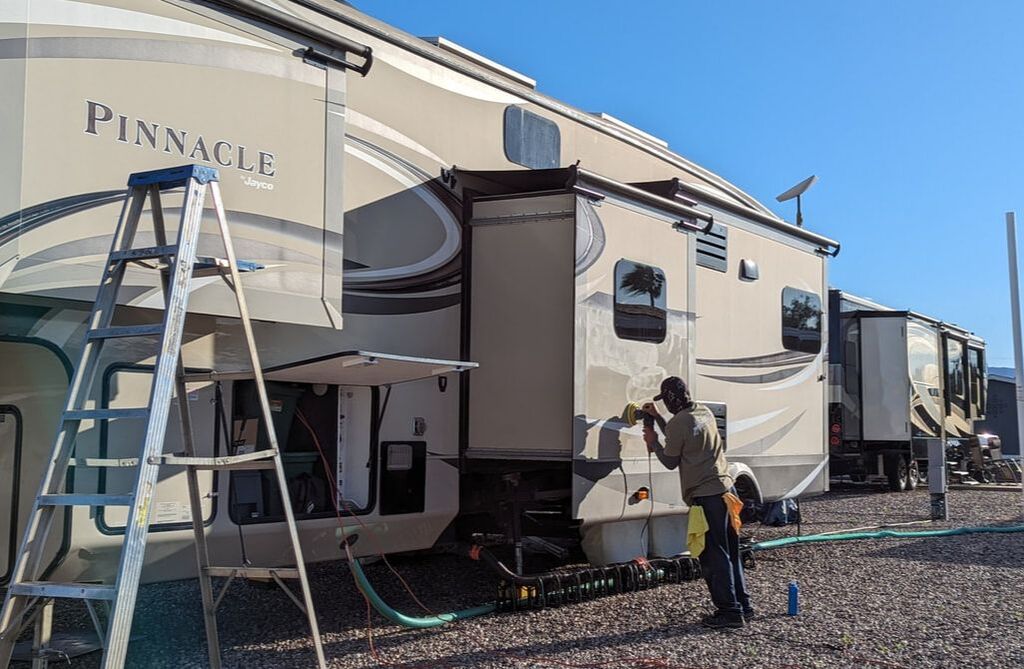
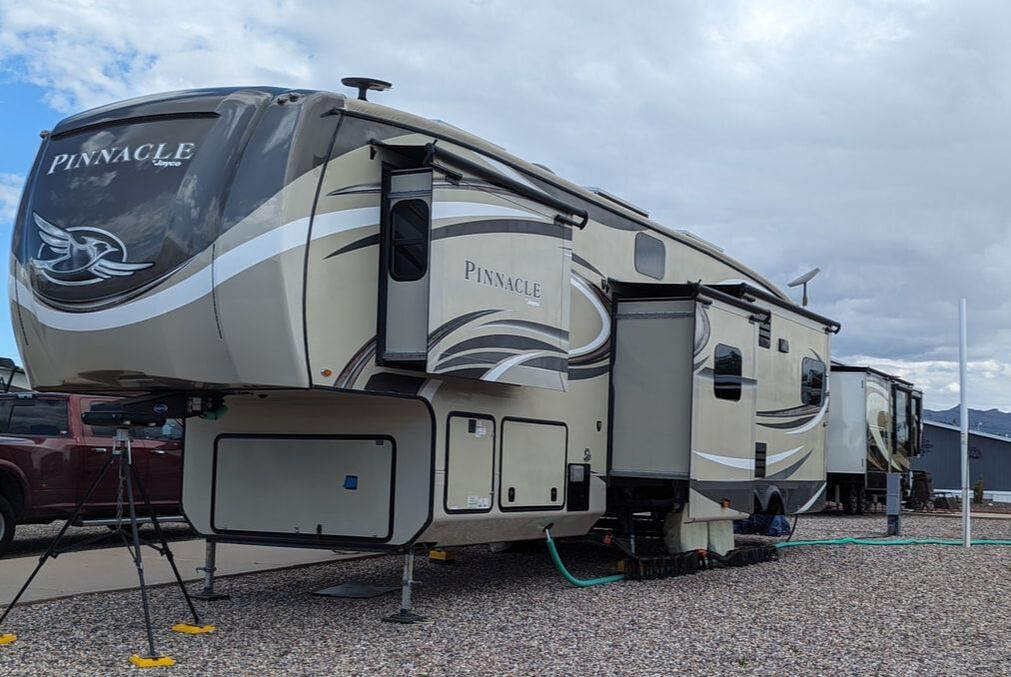
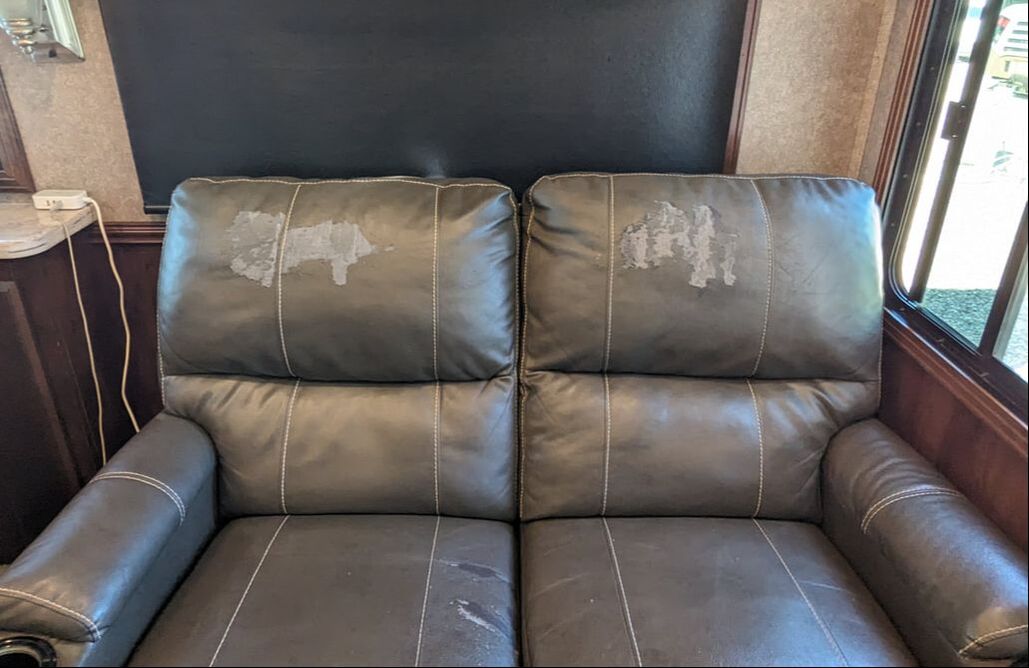
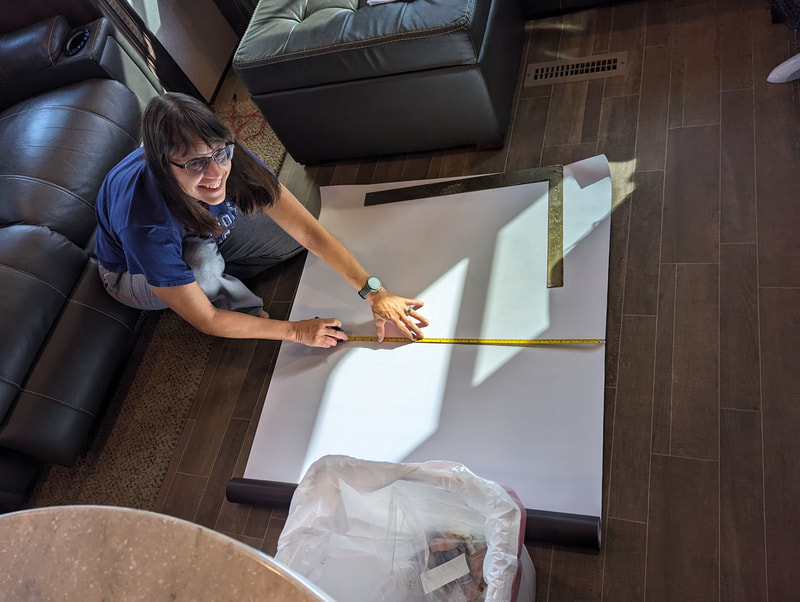
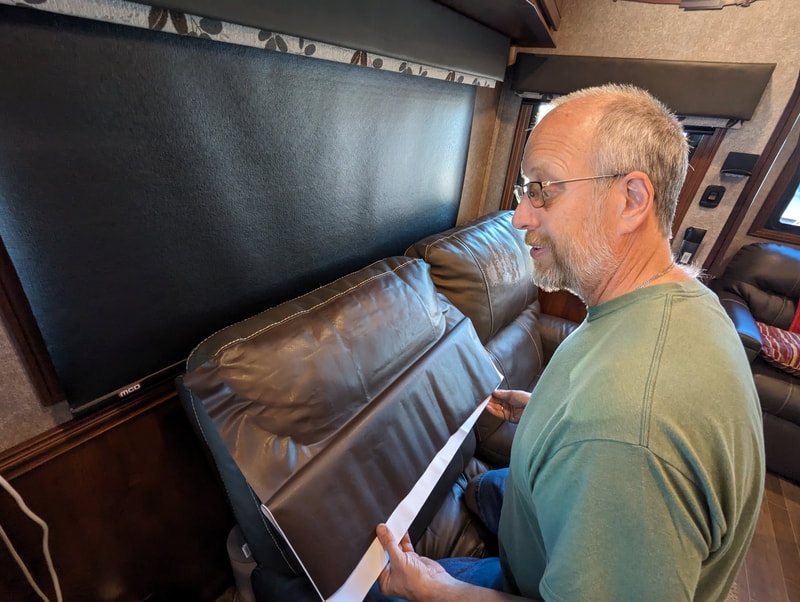
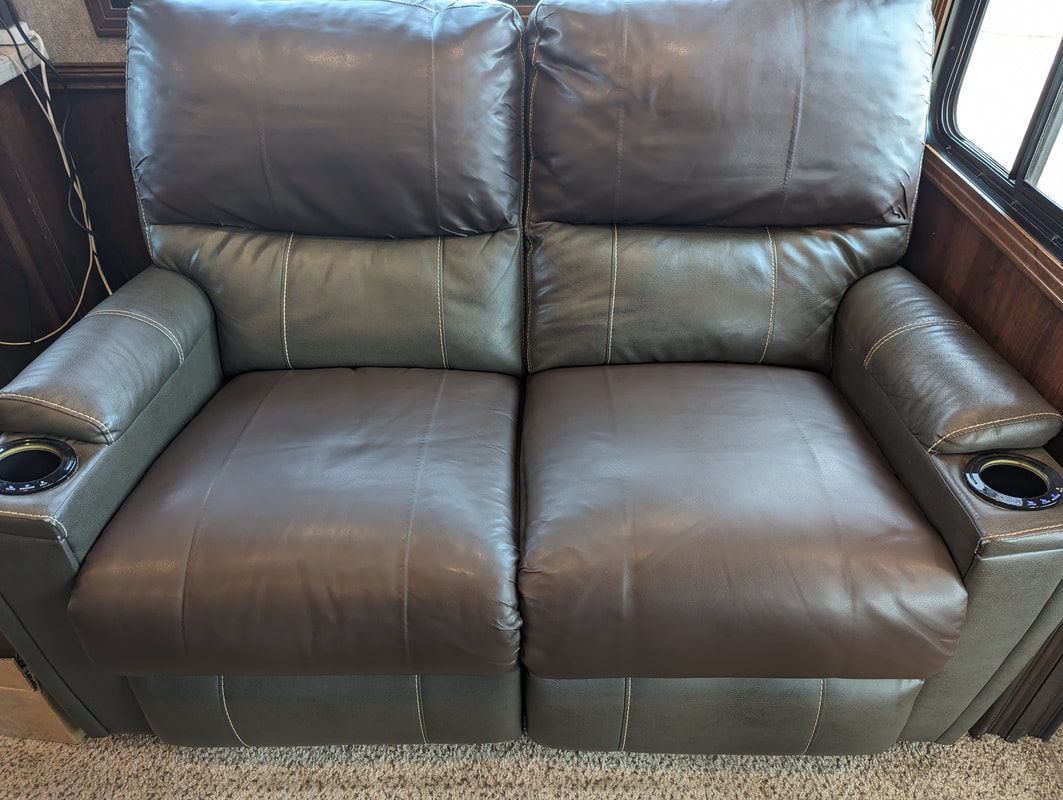
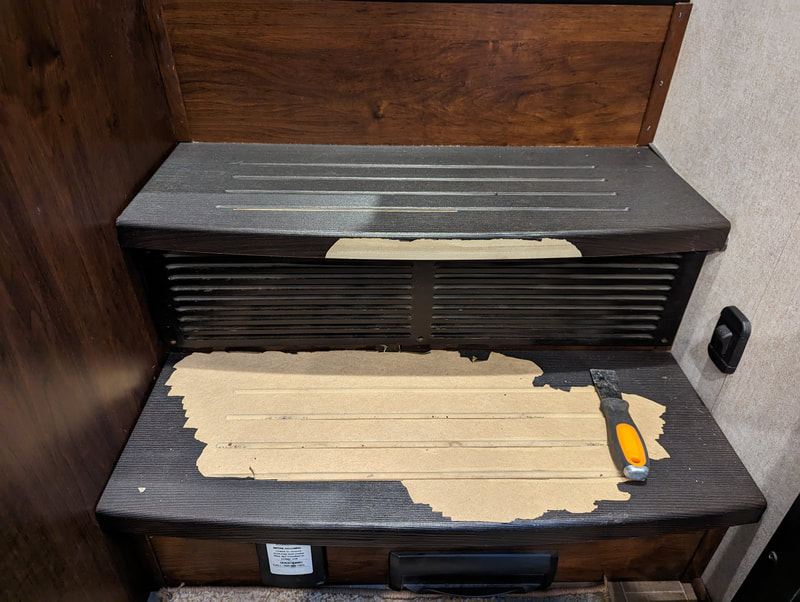
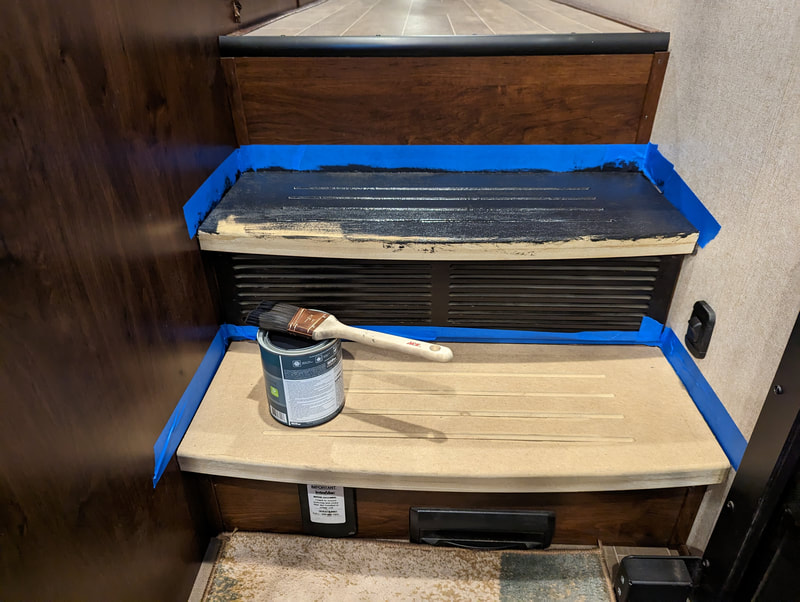
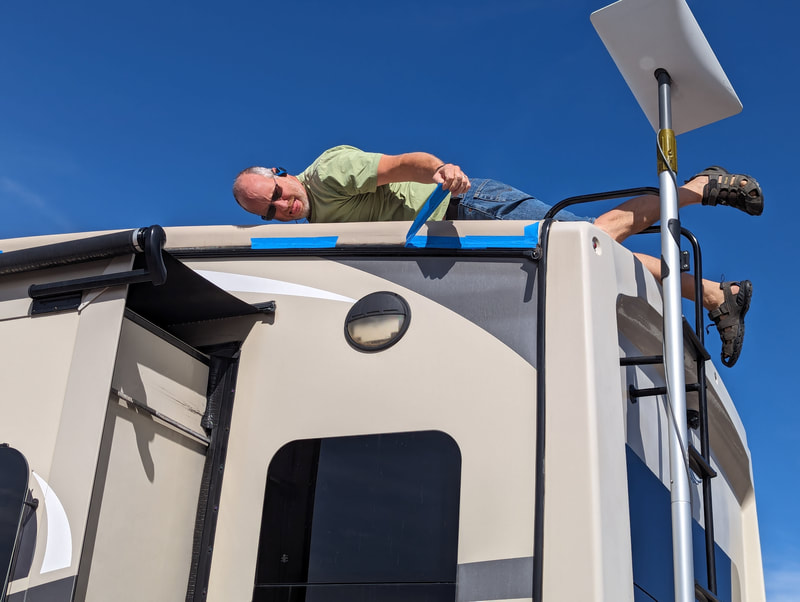
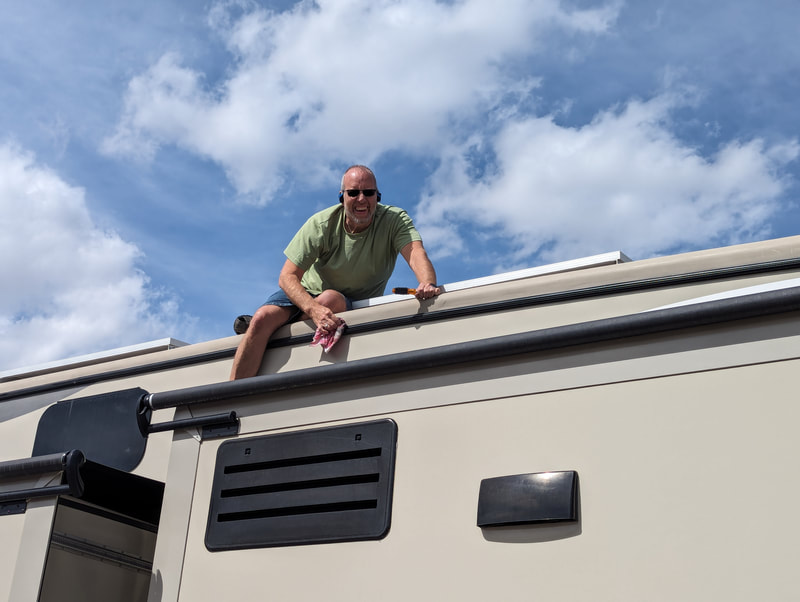
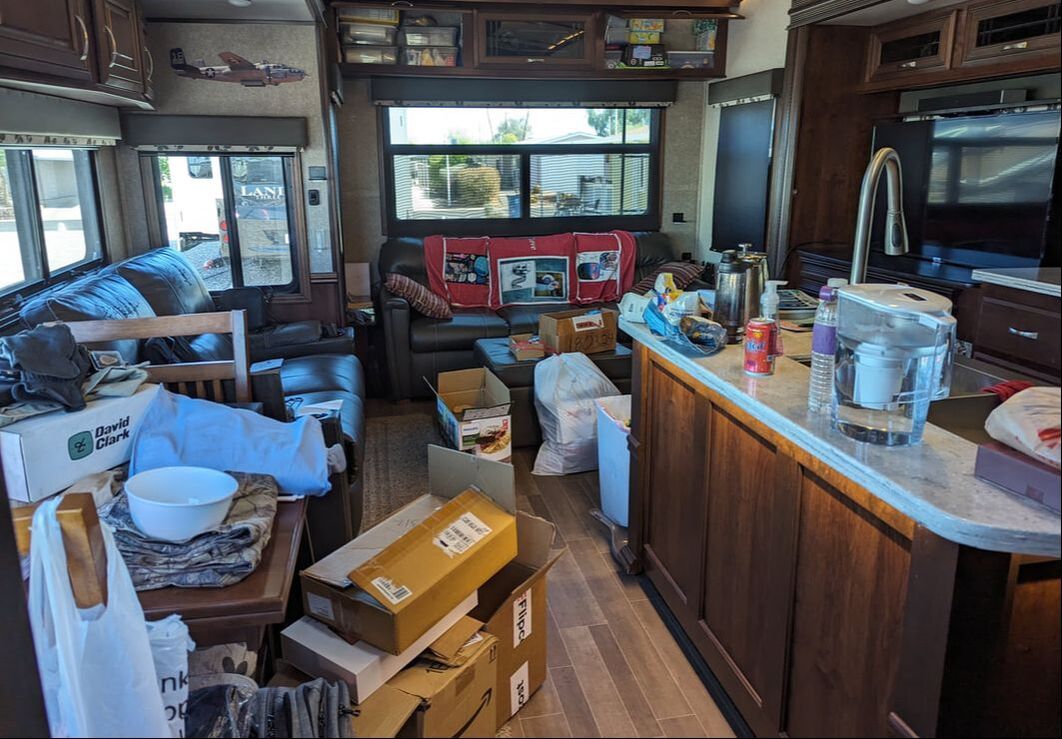
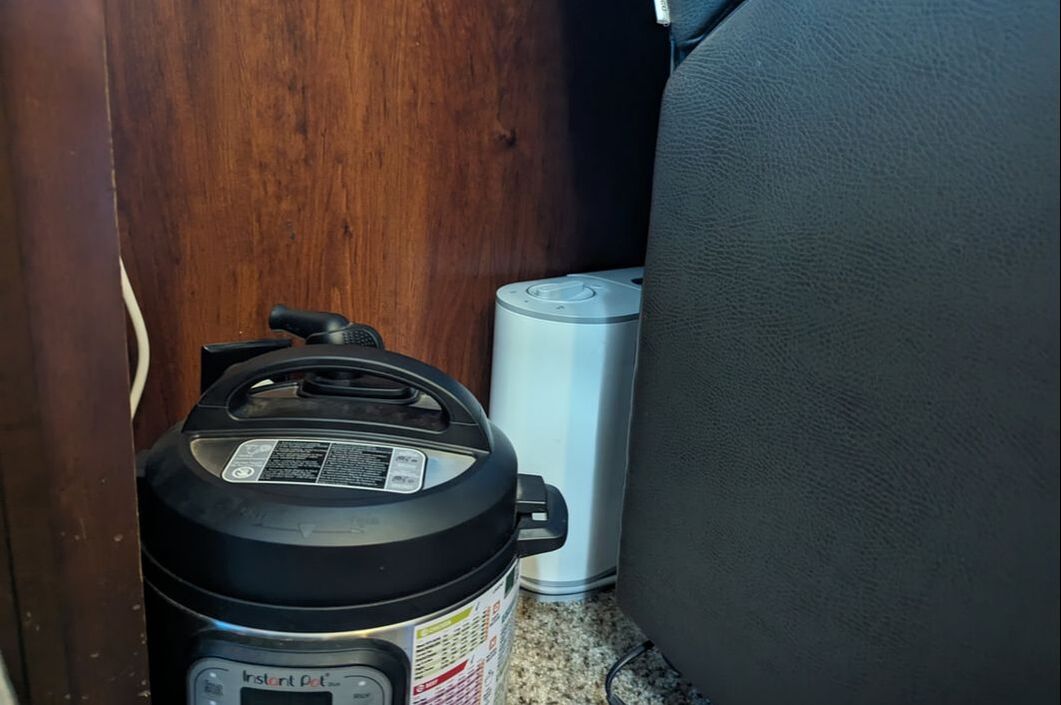
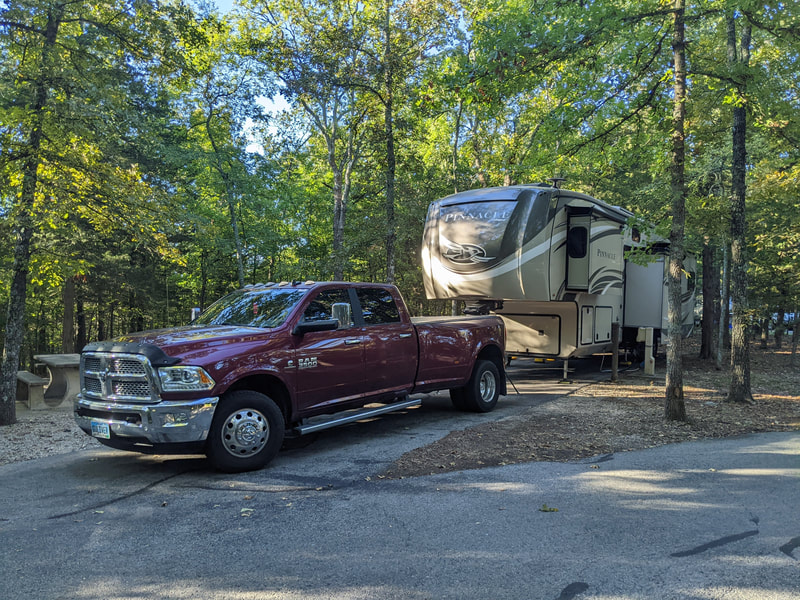
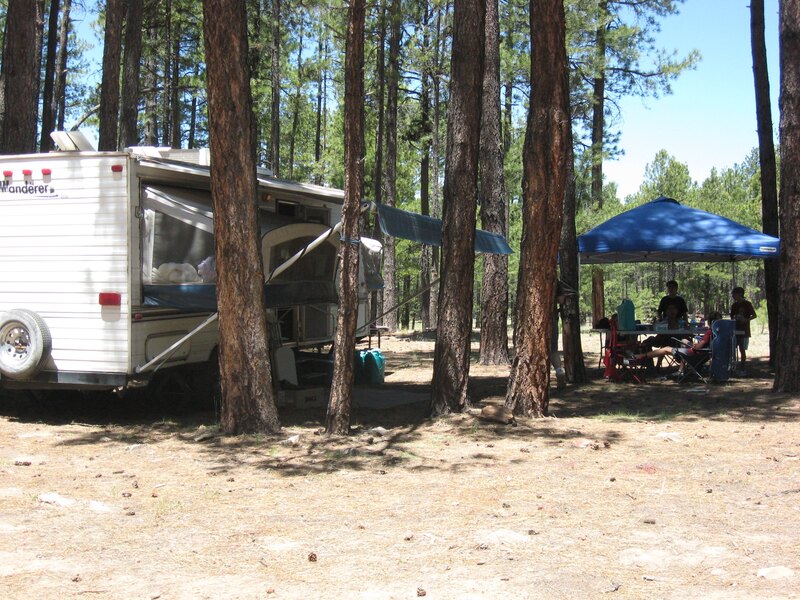
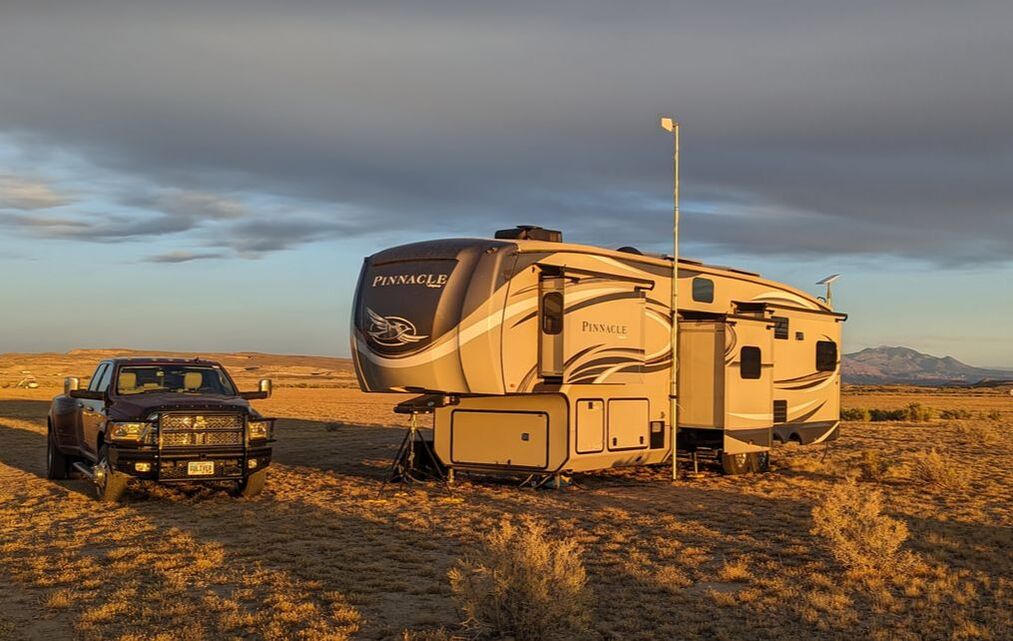
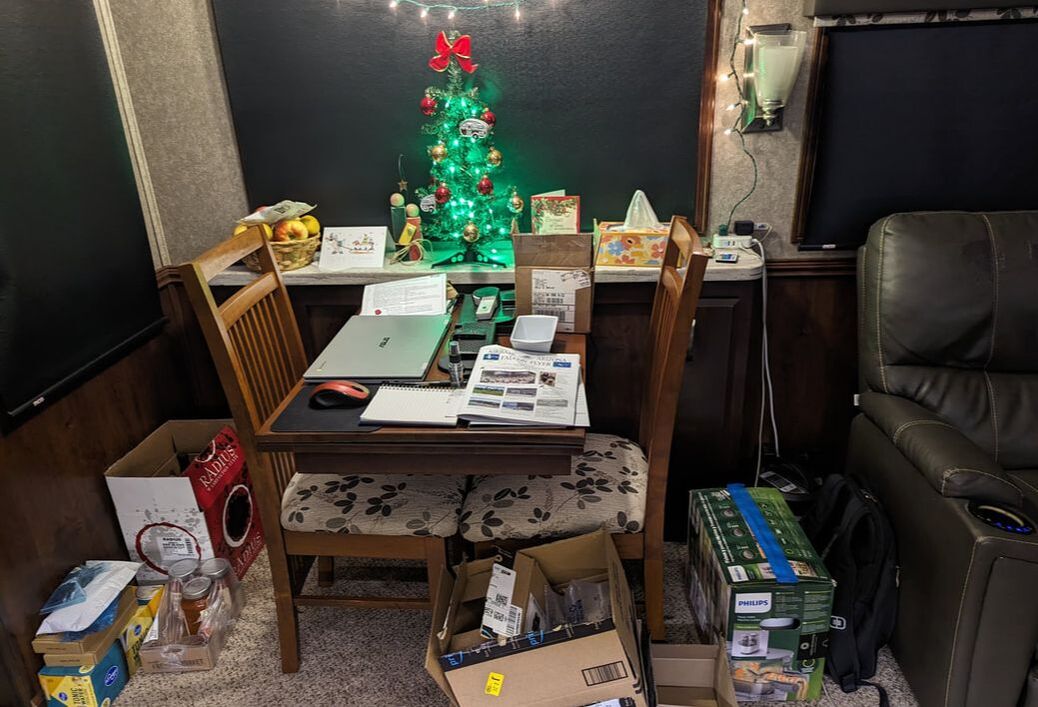
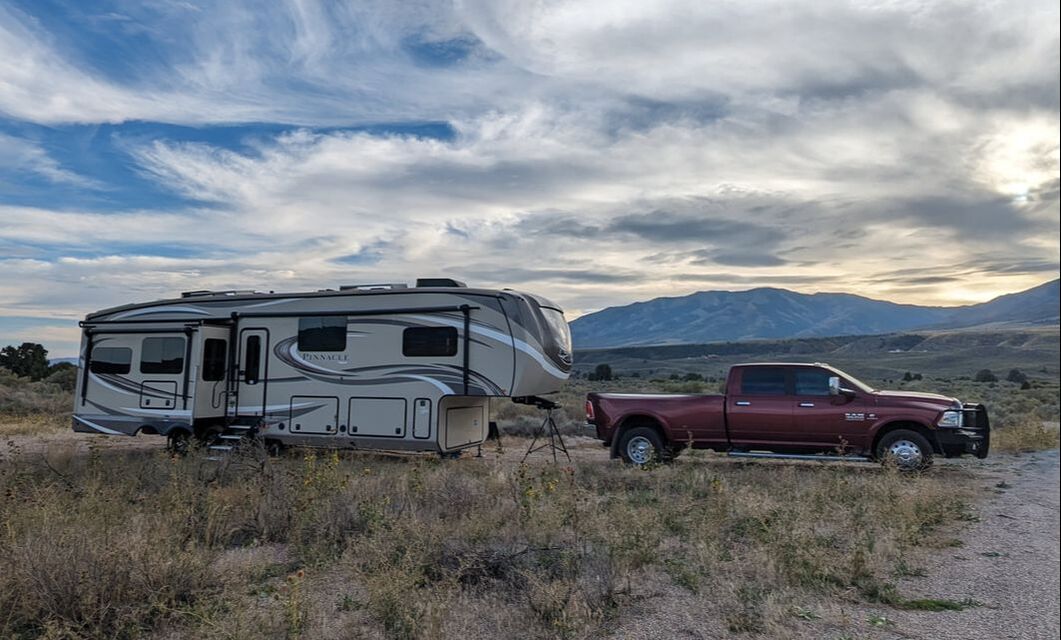
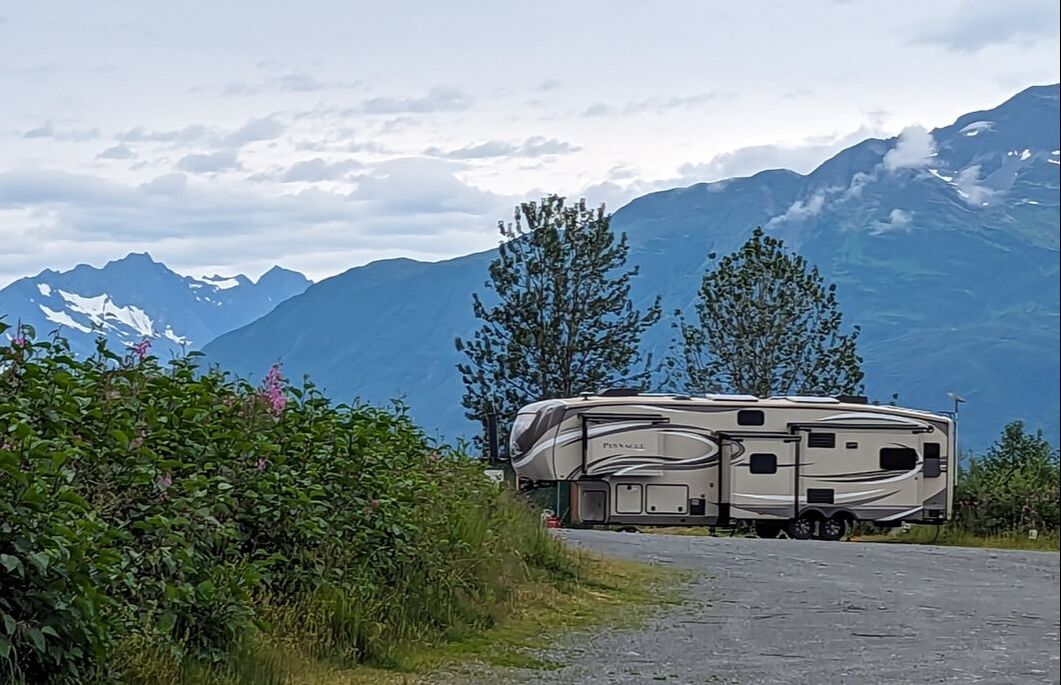
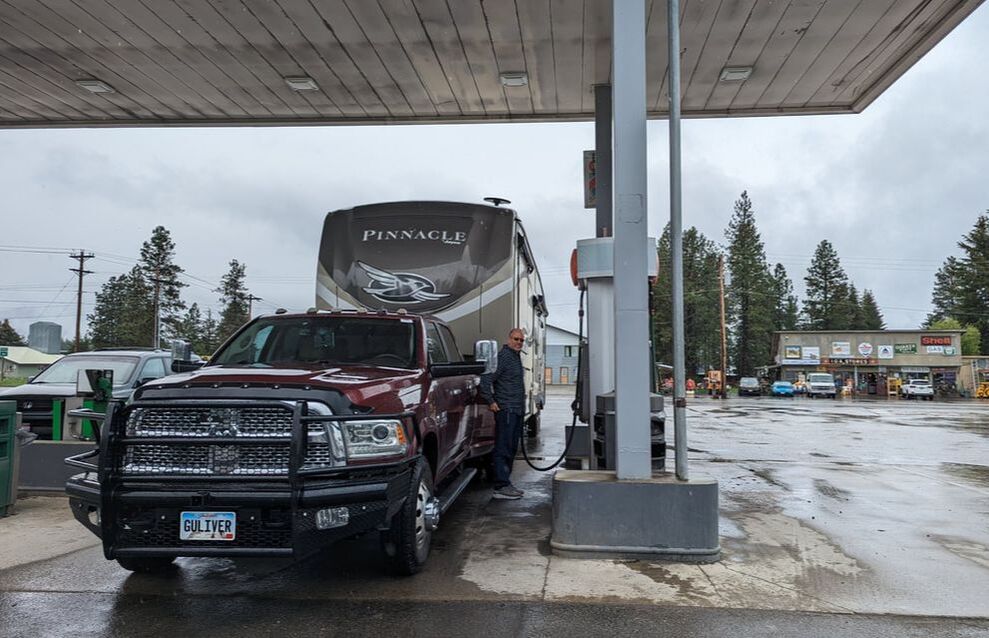
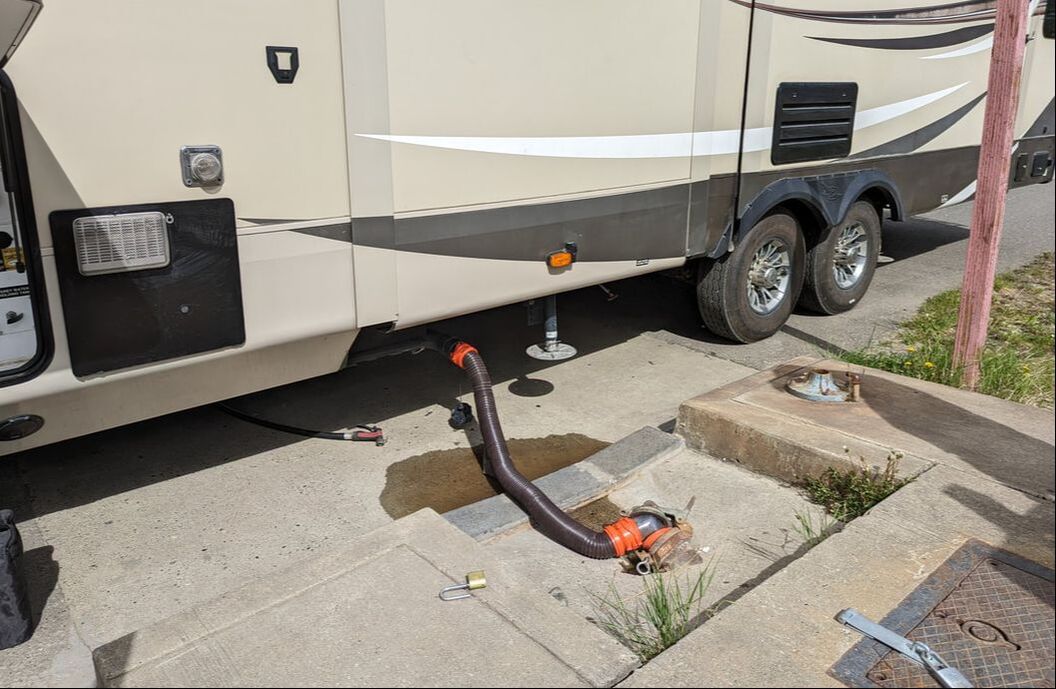
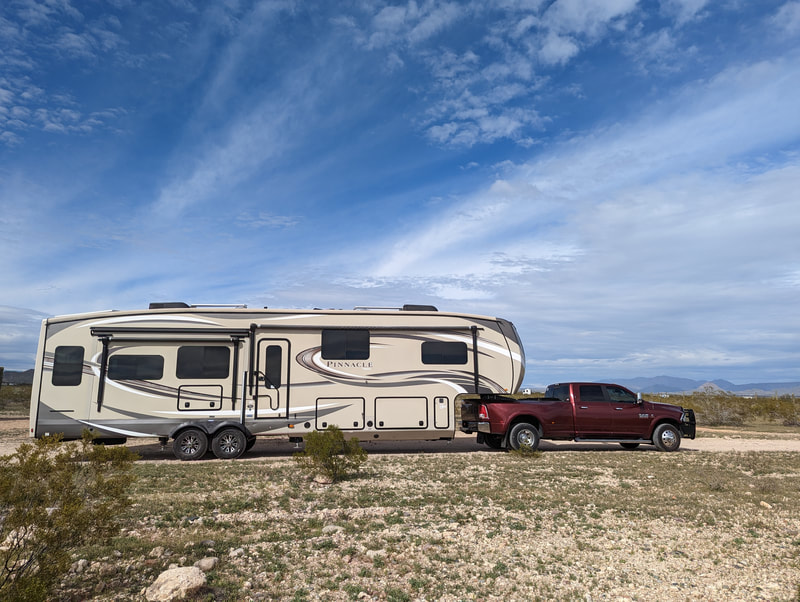
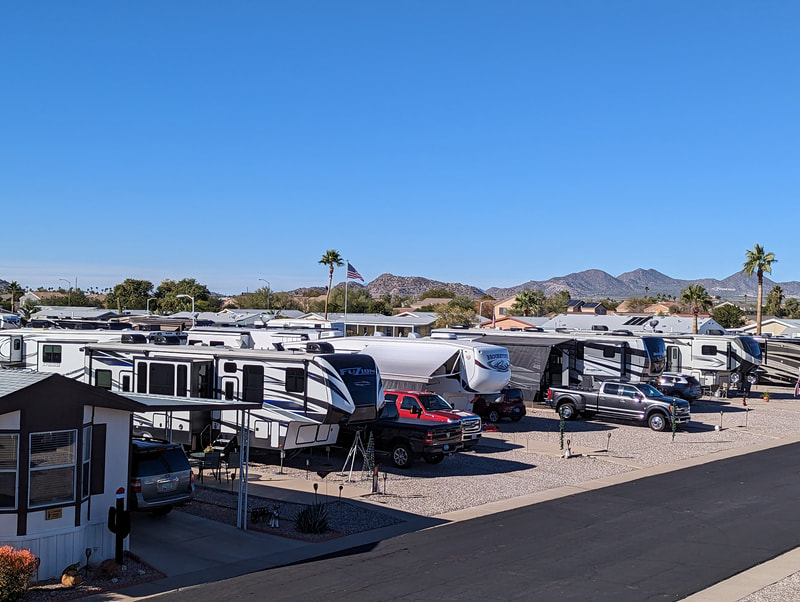
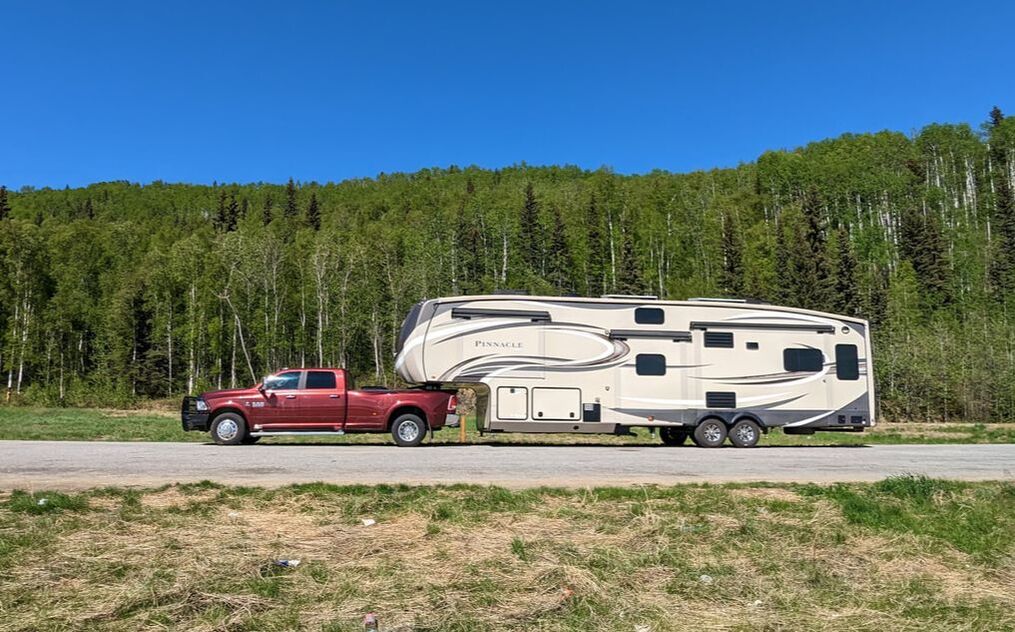
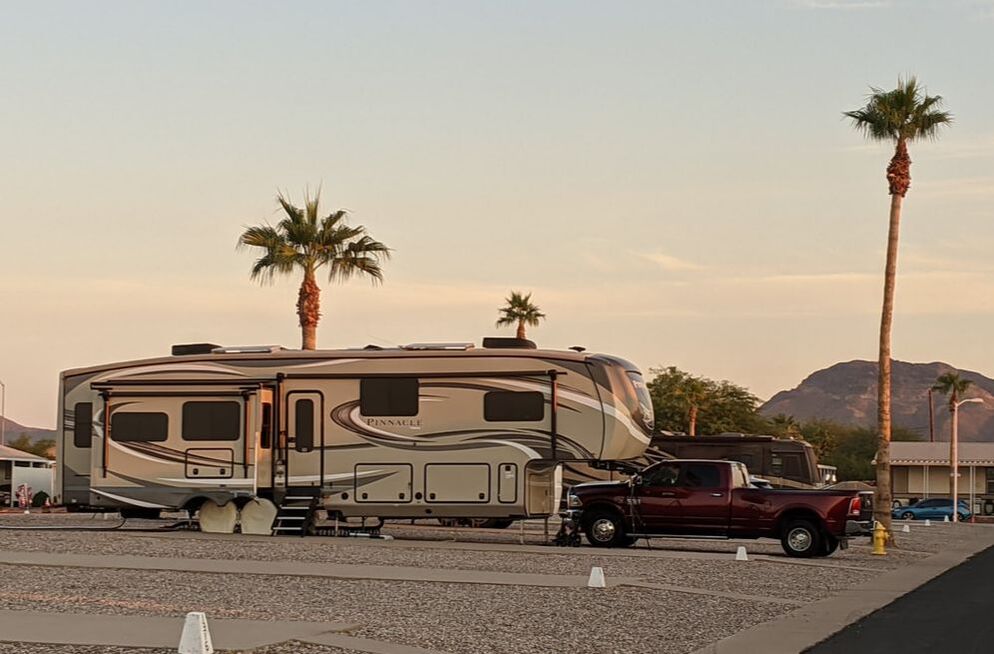
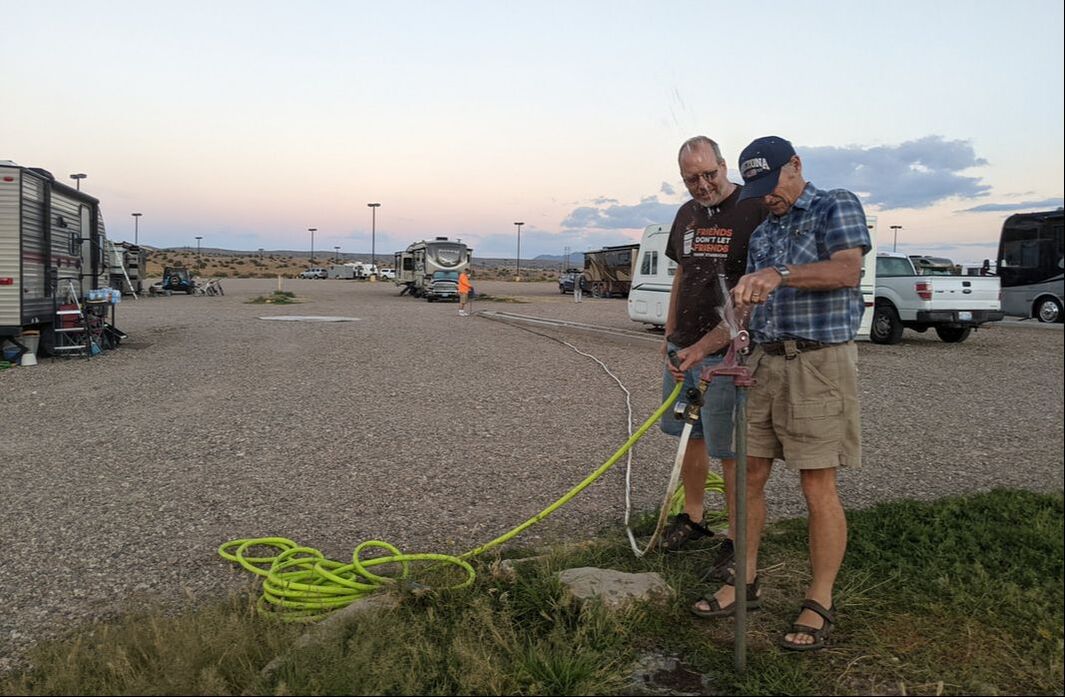
 RSS Feed
RSS Feed